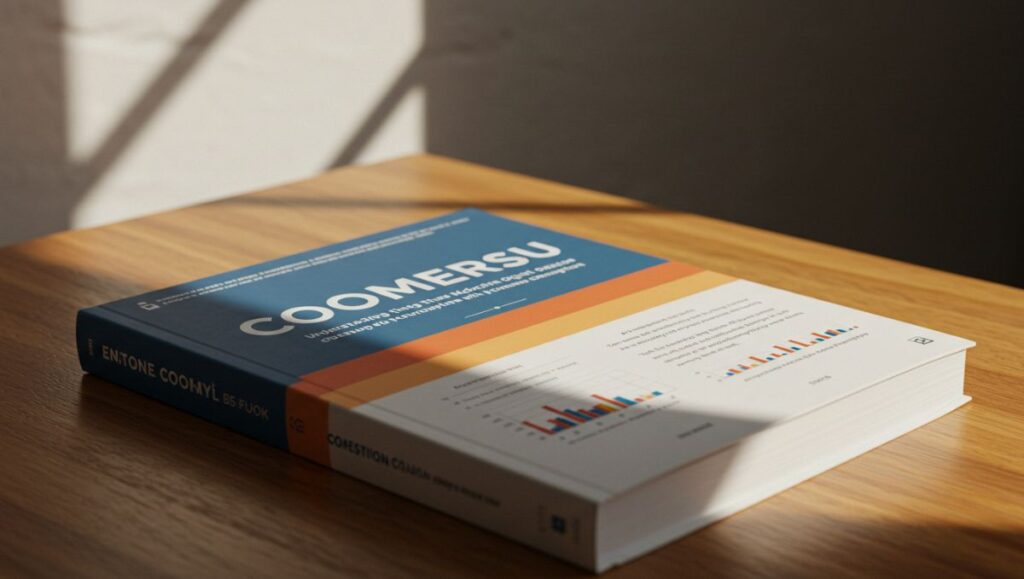In the age of digital hyper-consumption, new cultural phenomena emerge almost as quickly as the products they describe. One such term gaining traction online is “Coomersu” — a hybrid word that captures the darker side of consumerism in the digital era.
At its core, Coomersu is more than just a meme or an internet slang term; it represents an attitude and behavioral pattern shaped by instant gratification, material obsession, and identity built through online consumption. This article explores what Coomersu means, where it originated, and what it reveals about modern culture and technology.
What Does “Coomersu” Mean?
The term Coomersu is an internet-born concept combining two ideas:
-
“Coomer” – slang for someone driven by compulsive online gratification, often used to describe excessive indulgence in content or pleasure-seeking behavior.
-
“Consumer” – a person defined by purchasing habits and participation in the economy of goods and services.
Together, Coomersu paints a picture of a digitally addicted consumer whose habits are shaped by marketing algorithms, social media, and constant access to online shopping and entertainment.
The Coomersu represents the fusion of desire and commerce — a person whose identity and satisfaction are deeply tied to what they consume, not who they are.
The Origins of Coomersu
Like many modern internet terms, Coomersu emerged from online forums and meme communities. It began as a tongue-in-cheek way to describe people who constantly buy or engage with the latest tech, fashion, or digital trends without reflection.
Early mentions appeared in subreddits, image boards, and meme circles, where users mocked the compulsive purchasing culture fostered by influencer marketing and e-commerce. Over time, Coomersu evolved from a meme into a cultural critique — a shorthand for digital consumer excess.
The Psychology Behind the Coomersu Mindset
The Coomersu phenomenon reflects how dopamine-driven behavior fuels digital consumption. Every purchase, like, or new gadget provides a temporary rush of satisfaction, reinforcing habits that keep individuals in a constant loop of desire and acquisition.
Key psychological drivers include:
-
Instant Gratification: Online platforms make consumption frictionless — with one click, users can buy, stream, or experience something new.
-
FOMO (Fear of Missing Out): Social media constantly showcases what others have, pushing users to buy to “keep up.”
-
Algorithmic Targeting: Personalized ads use behavioral data to predict and exploit impulses.
-
Identity Through Consumption: Products become expressions of personality and status rather than tools for utility.
The result is a cycle where wanting becomes the product, and satisfaction becomes increasingly elusive.
Coomersu and the Age of Algorithmic Consumerism
In the digital economy, algorithms know consumers better than they know themselves. Every scroll, click, and purchase feeds into predictive systems that refine how products and experiences are marketed.
For the Coomersu, this creates an environment where temptation never ends.
Streaming platforms recommend new content, online stores suggest “just-for-you” deals, and influencers display lifestyles designed to trigger aspiration and envy.
This environment transforms consumption from a conscious act into an automated behavioral response, blurring the line between choice and manipulation.
The Role of Influencer Culture
The rise of influencer marketing has played a huge role in nurturing the Coomersu mindset. Modern influencers build trust and relatability — positioning themselves not as advertisers but as friends sharing recommendations.
For followers, this dynamic creates emotional attachment and perceived authenticity, making them more susceptible to persuasion.
The influencer economy thrives on:
-
Lifestyle projection: Selling not just products, but entire identities.
-
Parasocial interaction: Building one-way relationships that mimic friendship.
-
Micro-trends and fast turnover: Encouraging constant upgrading or replacing of goods.
This environment reinforces the Coomersu loop — the desire to buy becomes a form of participation in culture itself.
Coomersu as a Reflection of Modern Capitalism
At a deeper level, the Coomersu concept mirrors the evolution of late capitalism — where people’s self-worth and happiness are increasingly measured by material acquisition.
Today’s consumer economy doesn’t just sell products; it sells experiences, aesthetics, and validation. The Coomersu, therefore, is a symbol of how capitalism has internalized desire — turning consumption into identity.
In essence, the Coomersu is not just a victim of consumer culture but also a participant and amplifier of it.
The Digital Ecosystem That Feeds Coomersu
E-Commerce Platforms
Websites like Amazon, Temu, and Shein thrive on micro-purchases and fast product cycles, catering to the Coomersu craving for novelty.
Social Media
Platforms like TikTok, Instagram, and YouTube promote a culture of comparison and aspiration, where trends emerge and vanish within hours.
Subscription Services
From streaming platforms to monthly subscription boxes, these systems convert consumption into habitual dependency.
Mobile Apps and Notifications
Push alerts and personalized deals keep users constantly engaged, blurring the boundary between need and want.
Together, these systems form an ecosystem of endless consumption, rewarding attention with instant satisfaction while training users to crave more.
The Cultural Symbolism of Coomersu
Coomersu has also evolved into a symbol of irony and self-awareness within online communities. Many use it to mock their own habits — acknowledging the absurdity of chasing digital highs through shopping, collecting, or content binging.
This self-awareness gives the concept cultural depth: it’s both a critique of consumerism and a confession of participation.
In memes, for instance, Coomersu is often depicted as someone surrounded by packages, gadgets, and branded items, yet feeling empty or dissatisfied — a reflection of the paradox of abundance.
Breaking the Coomersu Cycle
Escaping the Coomersu loop isn’t easy, but it’s possible through mindful consumption and awareness.
Here are some practical ways individuals can reduce digital consumer dependency:
-
Conscious Consumption: Ask “Do I need this?” before buying.
-
Digital Minimalism: Limit screen time and unsubscribe from constant ads or notifications.
-
Delayed Gratification: Wait 24 hours before making non-essential purchases.
-
Financial Awareness: Track spending and understand emotional triggers behind purchases.
-
Value-Based Living: Invest in experiences, relationships, and learning rather than products.
By re-establishing control over impulses, individuals can transform consumption from compulsion to choice.
The Future of the Coomersu Era
As technology evolves, the line between human desire and algorithmic manipulation will blur even further. With AI-driven personalization and augmented reality shopping, the next phase of consumer culture may be even more immersive — and more addictive.
However, the increasing awareness of the Coomersu phenomenon may inspire resistance movements emphasizing digital well-being, slow living, and sustainability.
Gen Z and Millennials, for example, are already leading trends like:
-
Secondhand and circular economies
-
Minimalist aesthetics
-
Digital detox movements
-
Ethical consumption
These counter-trends show that while Coomersu culture dominates, there is also a growing push toward mindful rebellion against endless consumerism.
Coomersu and Society’s Identity Crisis
Ultimately, Coomersu isn’t just about products — it’s about meaning. In a world where people define themselves through brands, aesthetics, and digital personas, the concept highlights a deep identity void that consumerism tries but fails to fill.
It asks uncomfortable questions:
-
Are we choosing what we buy, or are algorithms choosing for us?
-
Is consumption an expression of freedom or a form of control?
-
How much of who we are depends on what we own?
The Coomersu serves as both a warning and a mirror — reminding us that unchecked consumption can quietly consume us in return.
Conclusion
The Coomersu concept encapsulates the contradictions of modern digital life — abundance without fulfillment, choice without control, and pleasure without peace.
In recognizing it, we gain the power to question our habits and reclaim autonomy over our desires. The goal isn’t to reject consumption altogether, but to consume consciously, aligning purchases with genuine values and needs rather than impulses.
Coomersu, in the end, is not just a critique of others but a reflection of ourselves in the digital age — a mirror showing how the pursuit of satisfaction through things can leave us perpetually wanting more.





